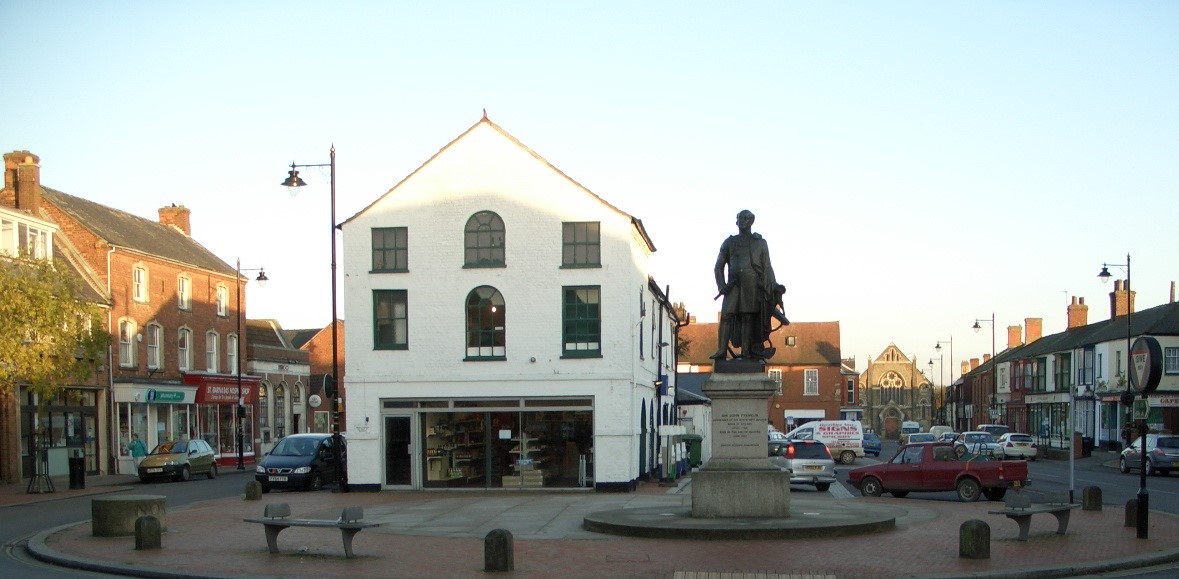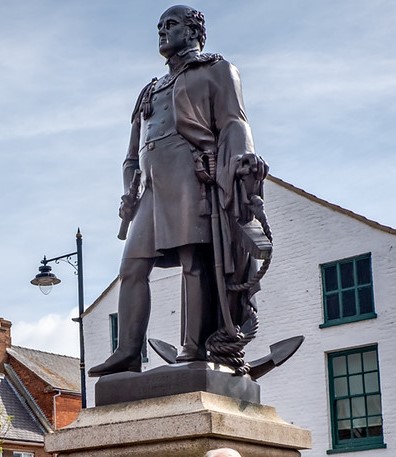
Arctic explorer John Franklin was born in Spilsby in 1786. His parents were both from the Boston area of Lincolnshire and moved to the town to start a merchant business.
Whilst studying at Louth Grammar School, the young John gained his love of the sea after a trip to Saltfleetby on the Lincolnshire coast. By the age of 14, Franklin had joined the Royal Navy as a ‘first class volunteer’. He stayed in the Navy until 1815, serving in wars against Napoleons France and the United States (where he was wounded in the shoulder).
After a brief stint back on land, John returned to the sea in 1818 as second in command of a ship bound for the Arctic. Within a year he was commanding an expedition charged with mapping the northern coast of Canada. More than half the crew died because of supply shortages and the rest had to eat bones and leather amongst other things to survive. Those that lived to tell the tale returned home as heroes, and Franklin himself was hailed as, ‘The man who ate his boots’.
In 1829 the title ‘Sir’ was added to Franklin’s name after a successful mission two years previous, mapping 1,200 miles of Canadian coastline. He continued to sail after that, taking command of a ship undertaking peacekeeping duties in the Mediterranean until 1834.
Two years later he accepted governorship of the island now known as Tasmania, a position he occupied until 1834.
In 1845 Franklin embarked on his last mission: an expedition to finish the surveying of the Northwest Passage through the north of Canada to the Pacific Ocean. By September 1845 they became icebound off the Island now known as Nunavut.
The ships never broke free, and Franklin died there in 1847. The vessels were abandoned by the remaining crew in April 1848, hoping to find a land crossing, but all died from either pneumonia, starvation, hypothermia, or scurvy. Research in the 1980’s suggested many of the crew had also been affected by lead poisoning from faulty food canning.
Franklins ship HMS Terror was not discovered until 2016 when it was found 48 metres under water, with masts standing and hatches closed. It was found many miles from its last known location and it is believed that it must have been sailed there by persons unknow as the anchor was used and the route required complex navigation.
A statue of Franklin in Spilsby Market Place bears the title, ‘Discoverer of the Northwest Passage’. Many geographical locations are named after him, including Franklin Island in Greenland and Franklin Strait in northern Canada.

